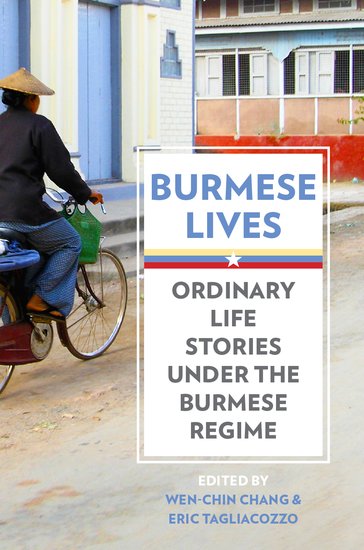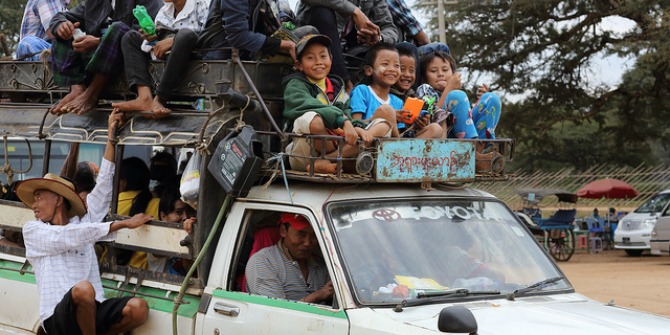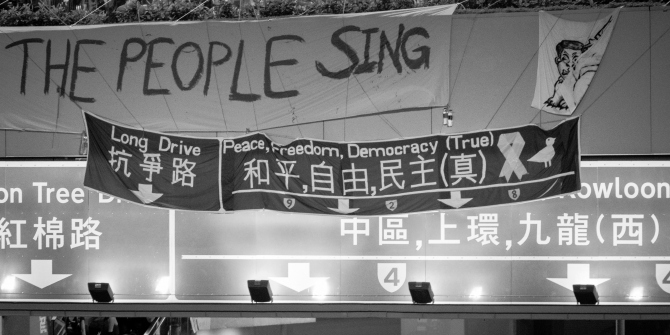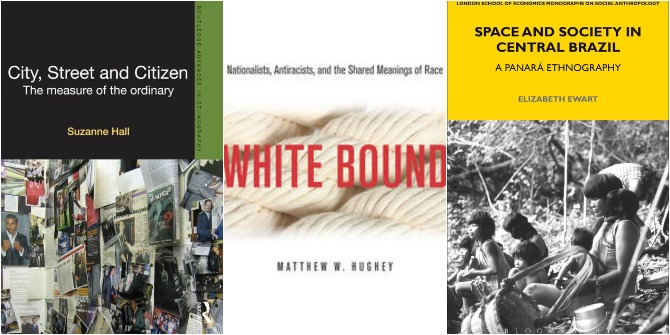 This volume looks to explore the life stories of ordinary Burmese by drawing on the narratives of individual subjects and using approaches from anthropology, history, literature, ethnomusicology, economics and political science. The authors of this volume write about stories of their long-term informants, close friends, family members, or even themselves to bring out a wide range of issues relating to migration, economy, politics, religion and culture. Michelle Lawson finds that the strength of this collection is the combined specialism of its writers.
This volume looks to explore the life stories of ordinary Burmese by drawing on the narratives of individual subjects and using approaches from anthropology, history, literature, ethnomusicology, economics and political science. The authors of this volume write about stories of their long-term informants, close friends, family members, or even themselves to bring out a wide range of issues relating to migration, economy, politics, religion and culture. Michelle Lawson finds that the strength of this collection is the combined specialism of its writers.
 Burmese Lives: Ordinary Life Stories Under the Burmese Regime. Eric Tagliacozzo and Wen-Chin Chang. Oxford University Press. 2014.
Burmese Lives: Ordinary Life Stories Under the Burmese Regime. Eric Tagliacozzo and Wen-Chin Chang. Oxford University Press. 2014.
Coming from a place where the ‘boundaries between the ordinary and the extraordinary become blurred’, Wen-Chin Chang and Eric Tagliacozzo’s edited volume addresses the challenge of documenting everyday life in Burma. The papers in this collection use a personal narrative approach that is largely centred on the individual, aiming to avoid the anonymised or abstract narratives of existing work. With eleven chapters plus the editors’ introduction, the book weaves together accounts of incredible hardship and resilience, ranging across different ethnic groups and sociocultural contexts.
The reader steps into the lives of people defined by music, medicine, trade, agriculture and politics and the authors consist of familiar names from the literature as well as NGO workers and those who write from their own experiences. The collection is thus notably multidisciplinary and its approaches include anthropology, ethnomusicology and history, as well as narratives from writers who are ‘less beholden to theories’ (p. 16). While the chapter by Sadan lays out a rationale for its method and signposts the reader towards an extensive reference list, other writers omit supporting references altogether; the editors justify this in the work of writers like Ma Thida who are ‘freer to situate lives in parameters of their own choosing’ (p. 16), although it seems unexpected in the chapters by academics such as Professor James C Scott. The editors present the eclecticism as a ‘strength’ of the collection, although the reader anticipating a traditional academic work may feel that the book doesn’t quite make up its mind. Nevertheless, the overall work is impressive in its range, and at the same time is accessible to a wide audience.
The editors attempt to bring in coherence by presenting inter/subjectivity as an overall theoretical focus, and they give a brief yet useful review of this approach. While not all writers draw on this explicitly, they certainly go beyond mere description in their exploration of the interaction between narrator and context. One unifying theme to emerge is that of contradiction, explored by Mandy Sadan in relation to political boundary crossing, but also seen in the outwardly apolitical stance of both Lu and Scott’s protagonists, and the interaction between traditional roots and the onslaught of modern practices in agriculture as examined by Eberhardt. I found the chapter by Sadan particularly useful in drawing together the issues that relate to the book as a whole. She acknowledges the difficult task in narrative of presenting the individual ‘as an actor in his or her own right’ (p. 29) whilst avoiding a merely descriptive set of snapshots; go too far down the route of abstract theory and the sense of individual lived experience is lost.
The chapters by Lu and Scott illustrate this variation, to an extent. Lu analyses a musician’s creation of a ‘self-contained musical world’ as an act of defiance against the nationalistic representation of music as patronised by the Burmese government. Using the concept of subjectivity, Lu convincingly argues for the notions of simplicity to be viewed as the musician’s agency in making a silent resistance, one that appears outwardly non-political. Scott, however, uses a more personal and sometimes opinionated (The Mission is ‘by far the best film of the four’) style in the account of Tin Win, a doctor whose encyclopaedic knowledge of western films and music is used to make sense of his life in Burma. Tin Win is loosely conceptualised as an ‘internal migrant’ or ‘escape artist’ who inhabits an imaginary world outside Burma that is characterised by western films; this is an interesting case study that speculates on why these films hold significance for Tin Win and how they represent aspects of his life path. For example, the claim that Tin Win finds parallels with Forest Gump is supported to an extent by some of his lyrics. Overall, Scott’s case study approaches a convincing argument, and I felt that there was enough here to develop into a more systematic and less speculative analysis of how these films resonate, in the respondent’s mind, with the situation in Burma and his attention to duty in a corrupt political world.

Taking a different course is the chapter by Boutry, which consists of a ‘life narrative’ of an individual (The Maung Aye) who actually died in 1987. Boutry’s ethnographic research took place in the southern Mergui Archipelago, a region that has undergone settlement by Burmese incomers among the traditional Moken sea-nomads. Boutry takes the story of Aye’s arrival in the islands, his trading, his marriage to a Moken woman and his death, as a starting point to develop the rest of the story as one individual’s legacy – the unfolding consequences of his decision to come to the Archipelago. While the life narrative does not – indeed cannot – portray the close, individual-centred aspects generated in the other interviews, it gives an interesting structure to the analysis of the process of Burmanization and its dual-centric character. Boutry argues beyond the idea of centre-towards-periphery assimilation of Moken into Burmese society, as he balances the picture with the idea that the Burmese settlers themselves have been enriched with a more local (regional) identity. Morever, Boutry explores how the Moken have retained their ‘major identity traits’ in the face of Burmanization. Ultimately the interaction is presented as more dynamic than a one-way assimilation, and Boutry presents interesting evidence for a ‘new marine-insular identity’ (p. 70) within the Burmese settlers.
Overall, the book raises some issues for further exploration: Sadan’s questions about the role of women and the forging of regional identity, and Scott’s drawing on the concept of ‘internal migration’ particularly come to mind. But one of the real strengths of this collection is the combined specialism of its writers, and consequently the reader does not require an extensive knowledge of events in Burma to make sense of the narratives, since the writers situate them adequately, using extensive detail. Therefore the collection provides not only an academic resource, but it can also be recommended as an accessible route into understanding everyday life in Burma. As Sadan concludes, sometimes we need to simply understand and listen to the voices of ordinary people.
Michelle Lawson is a PhD candidate at Lancaster University, Department of Linguistics and English Language, where her research explores the discursive construction of identity and the role of the online forum in relation to British migrants in the Ariège, France. She holds an MRes in Linguistics from Lancaster University and an MA in Education (Applied Linguistics) from the Open University. She is an Associate Lecturer for the Open University and she also works globally in English language assessment. Read more reviews by Michelle.







